RARE! WWII Royal Air Force 1940 Battle of Britain “EMERGENCY FLIGHT PLAN” Heavily Marked Combat Map

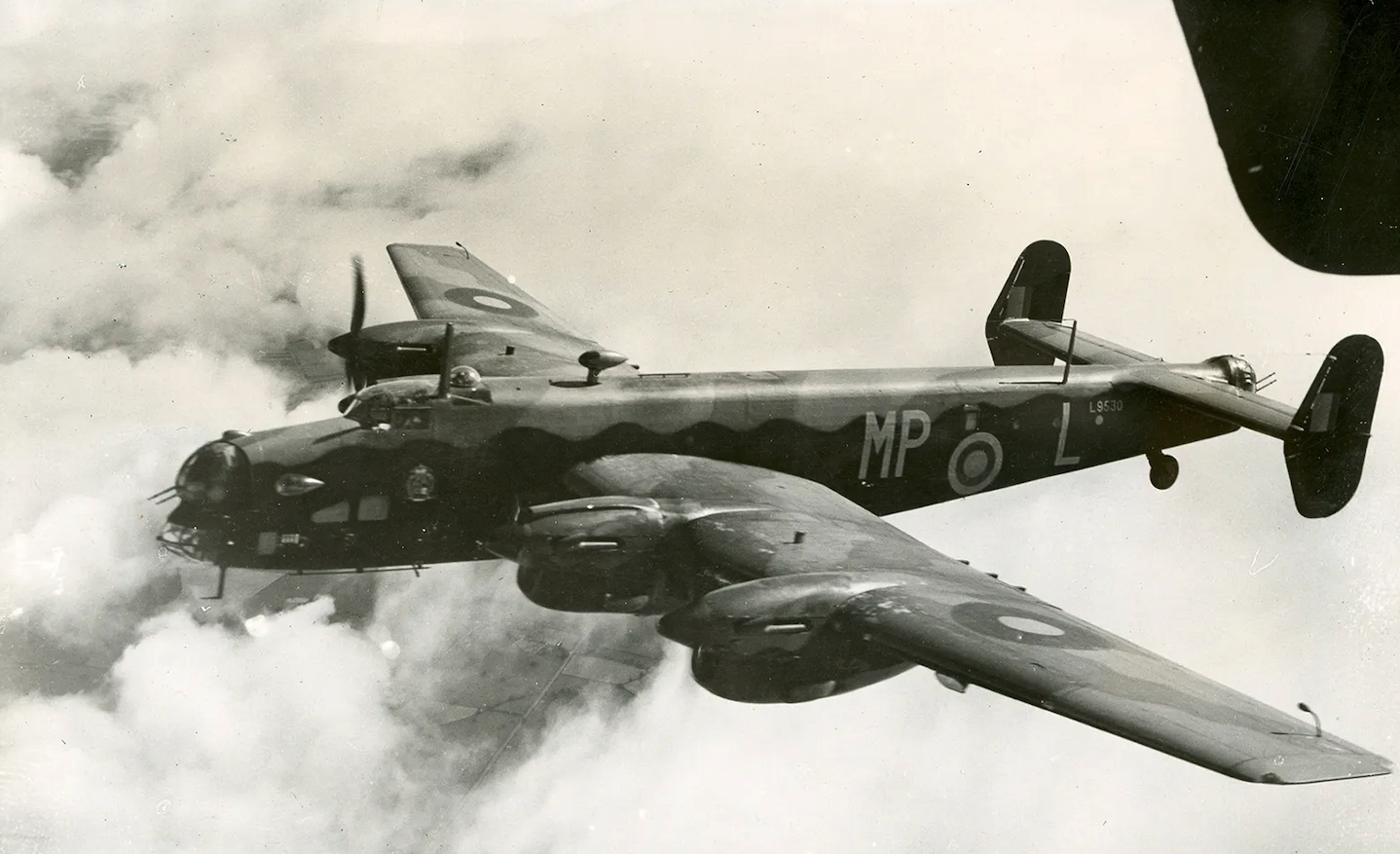
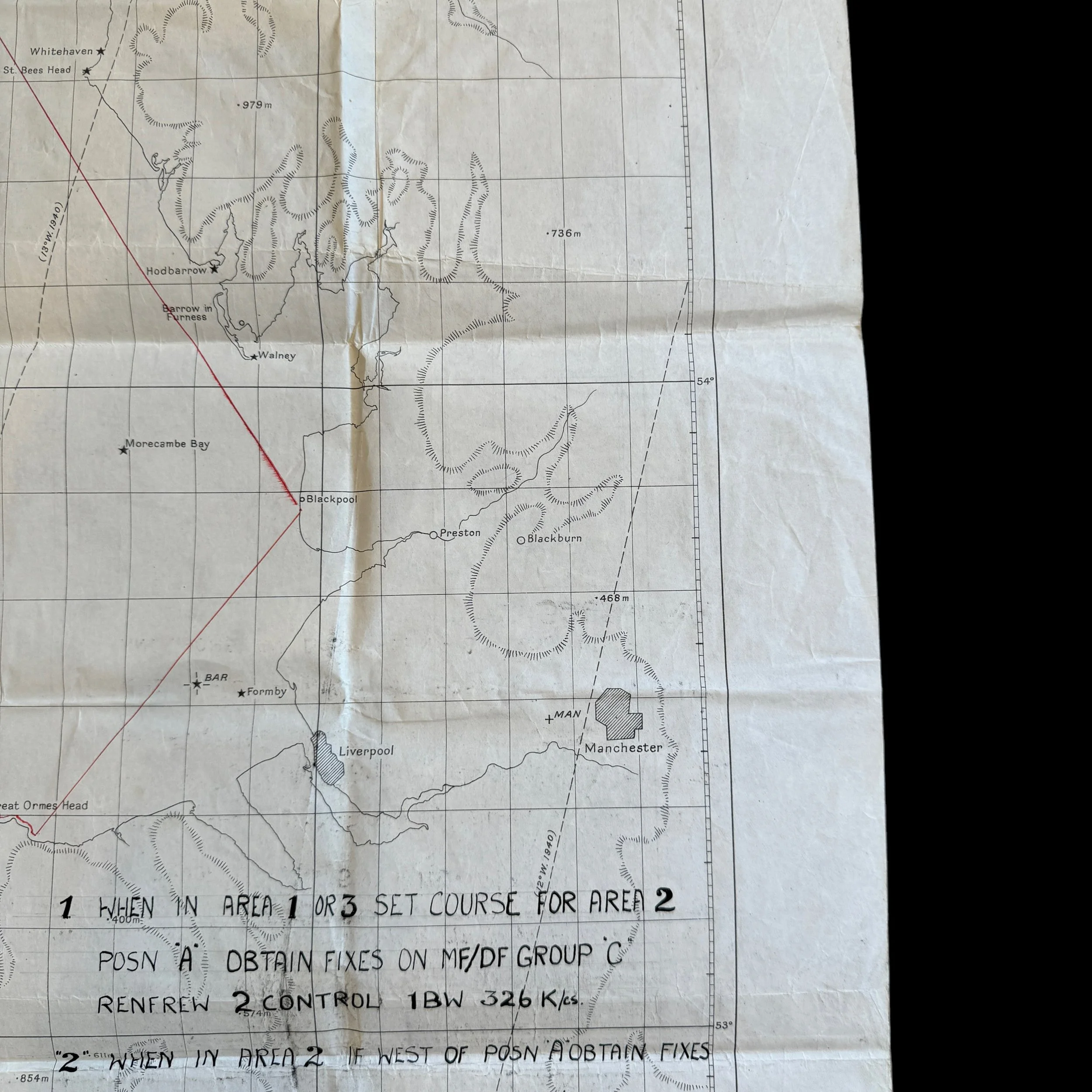














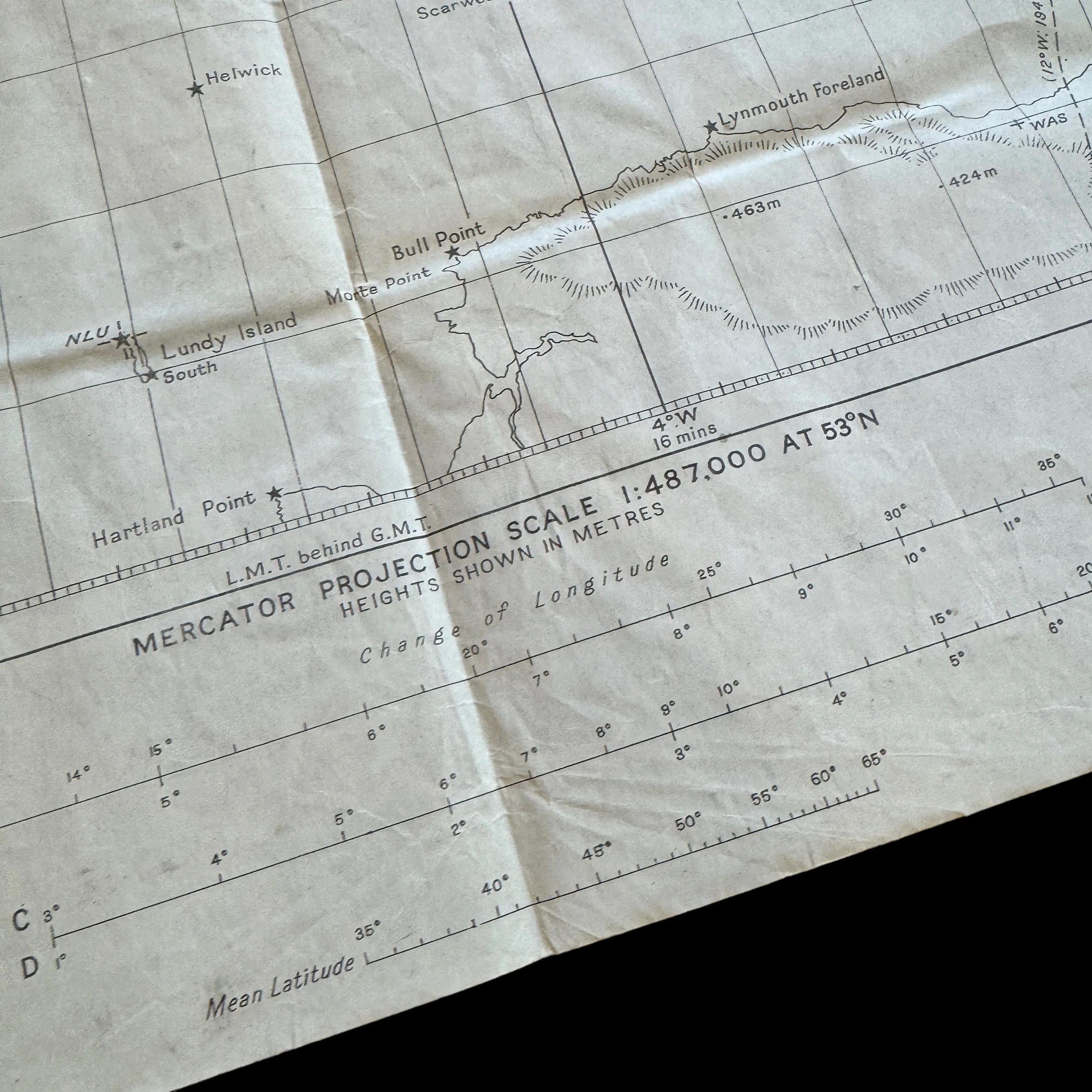



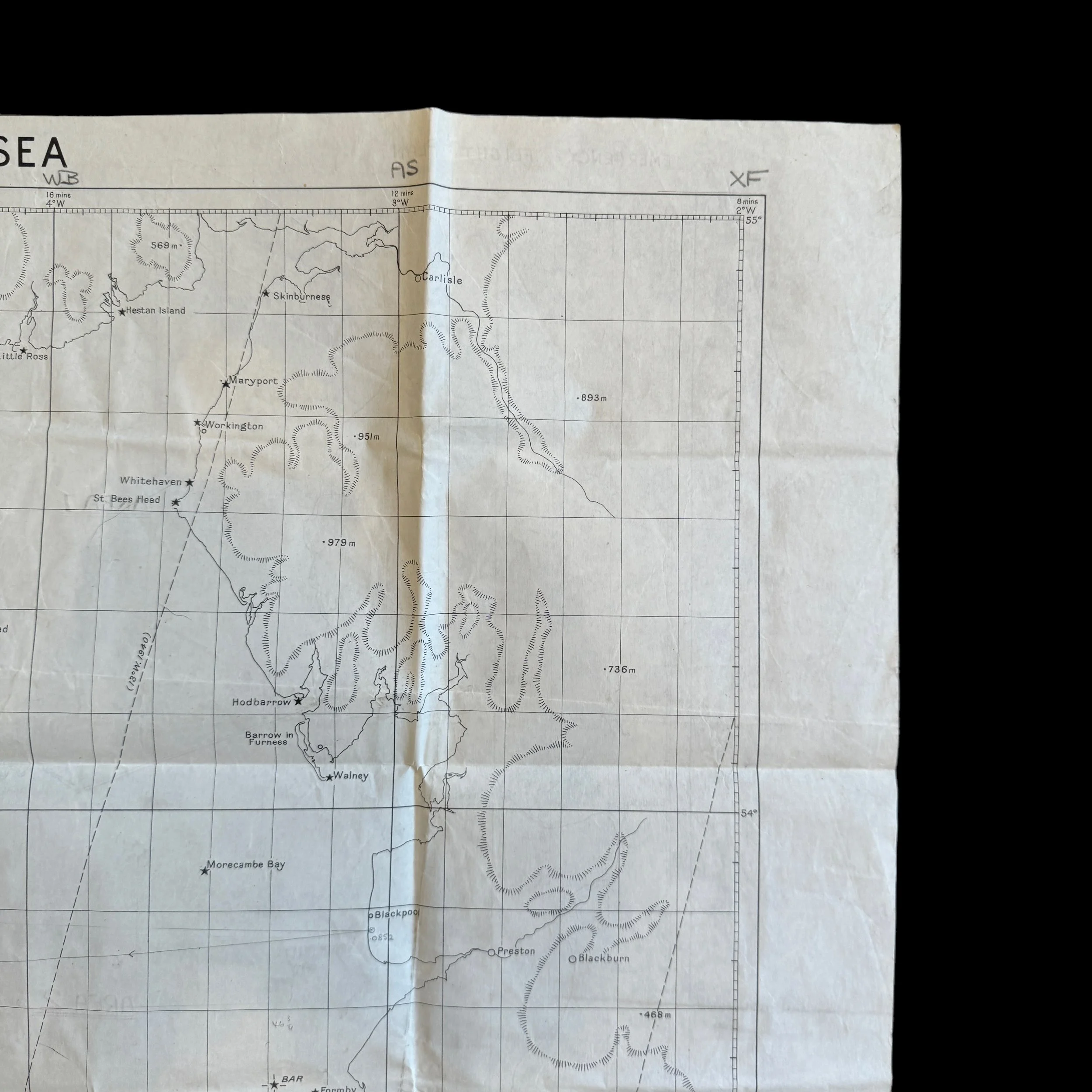










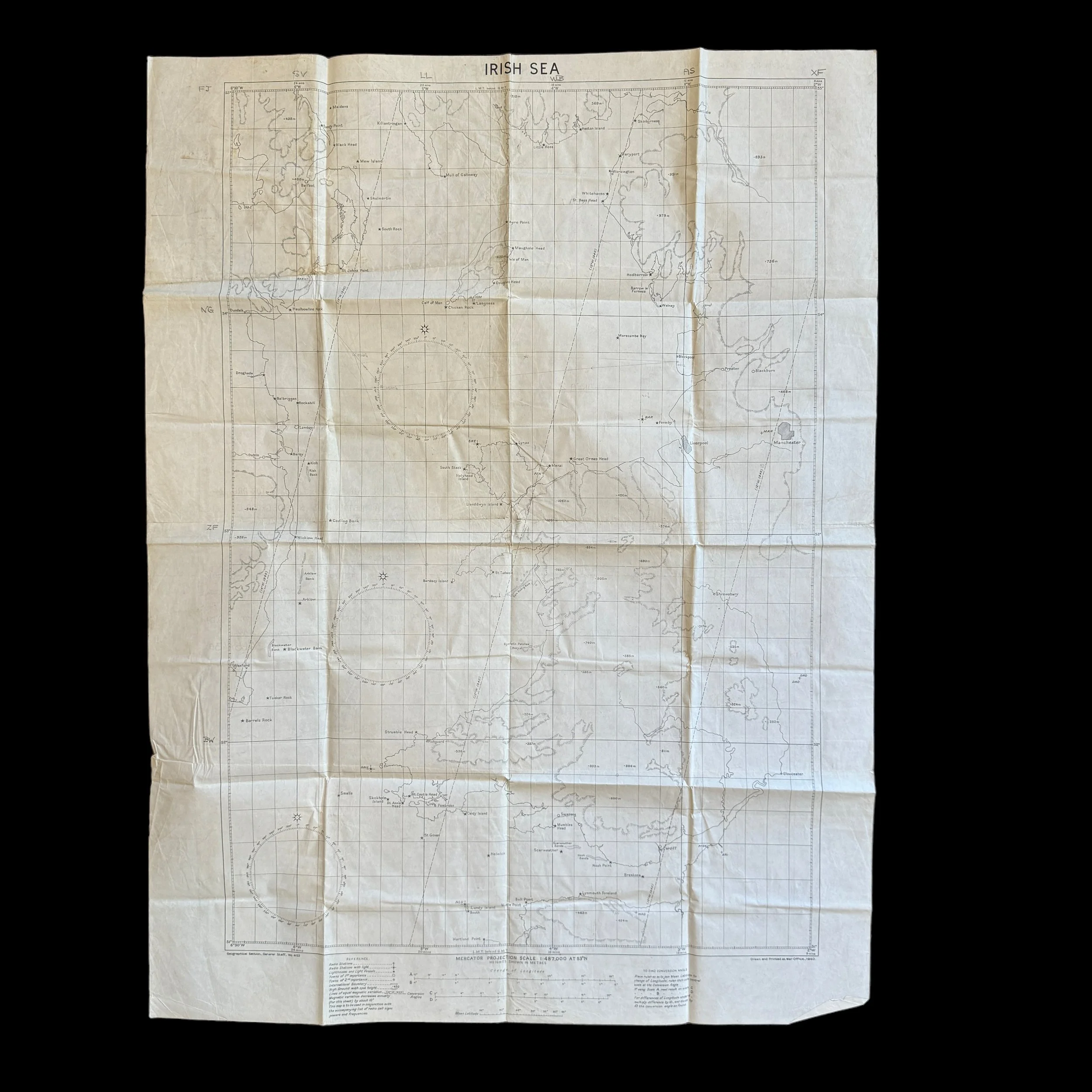
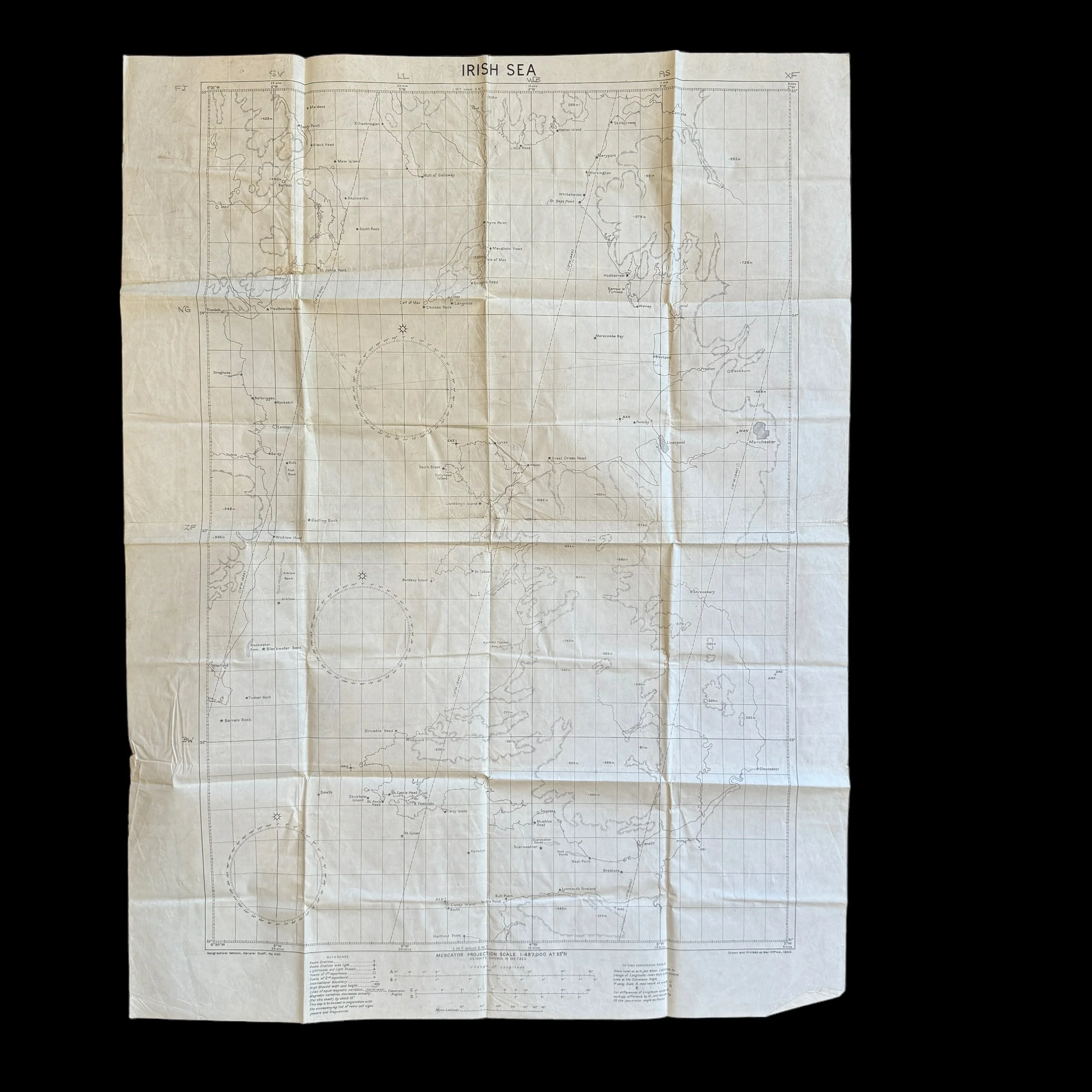



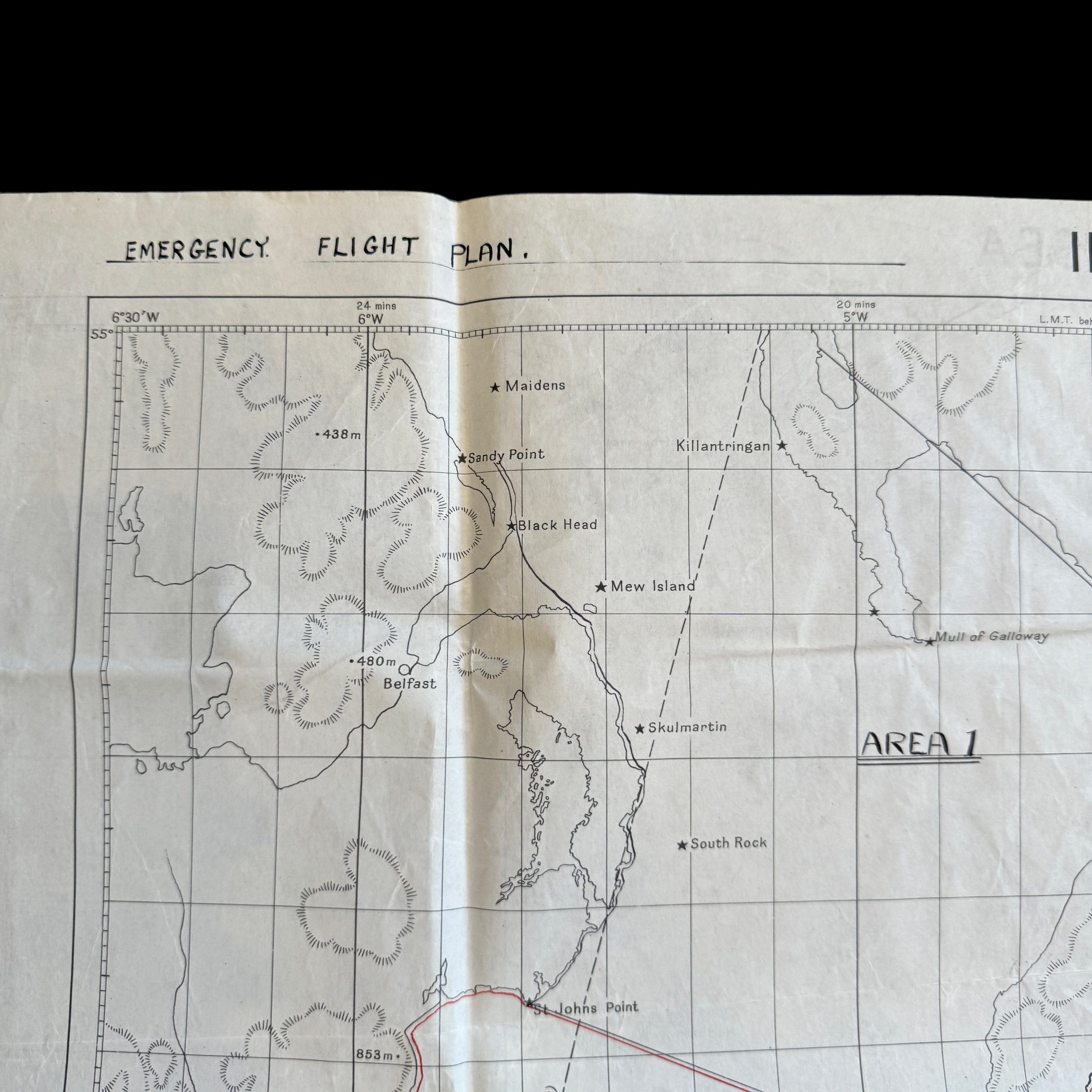



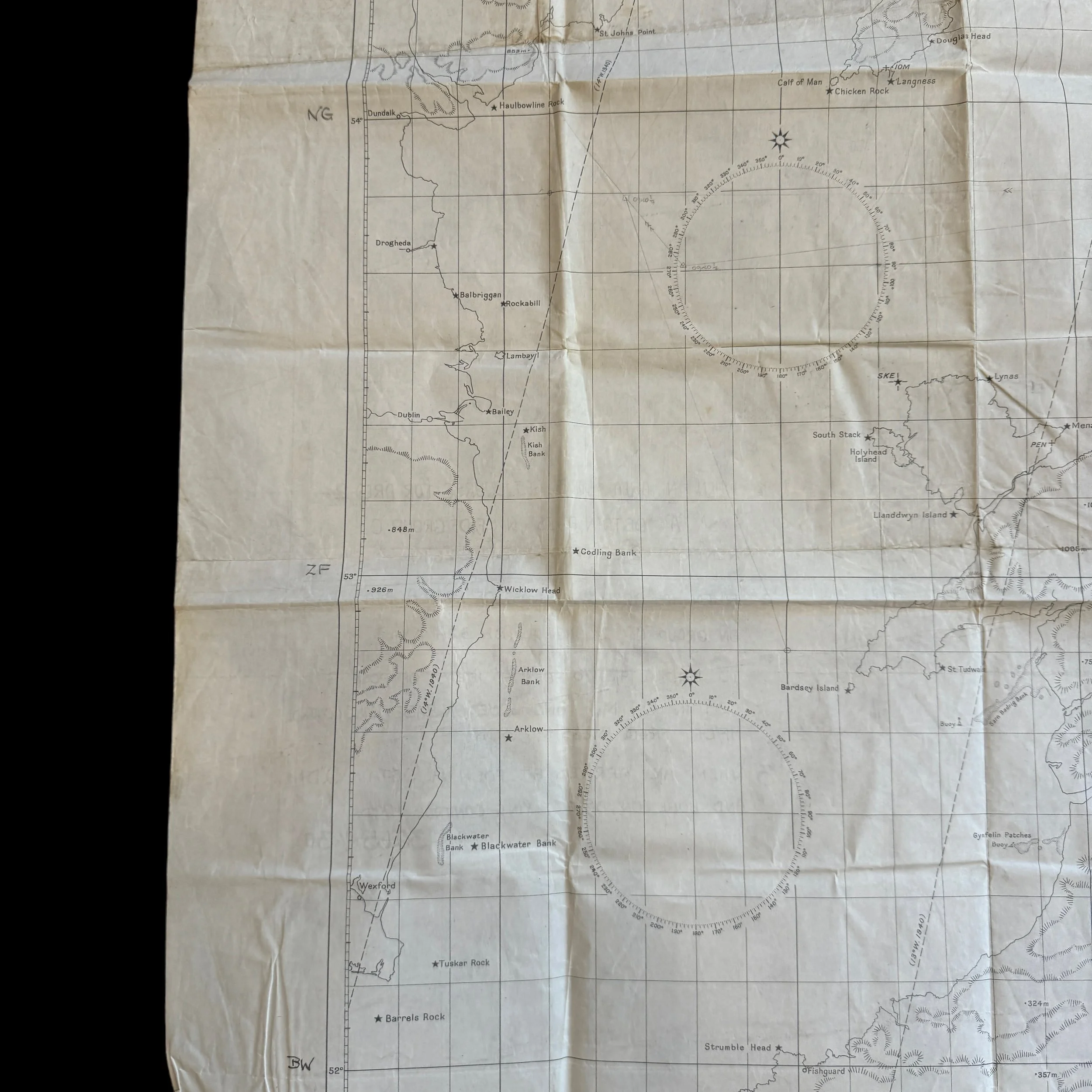

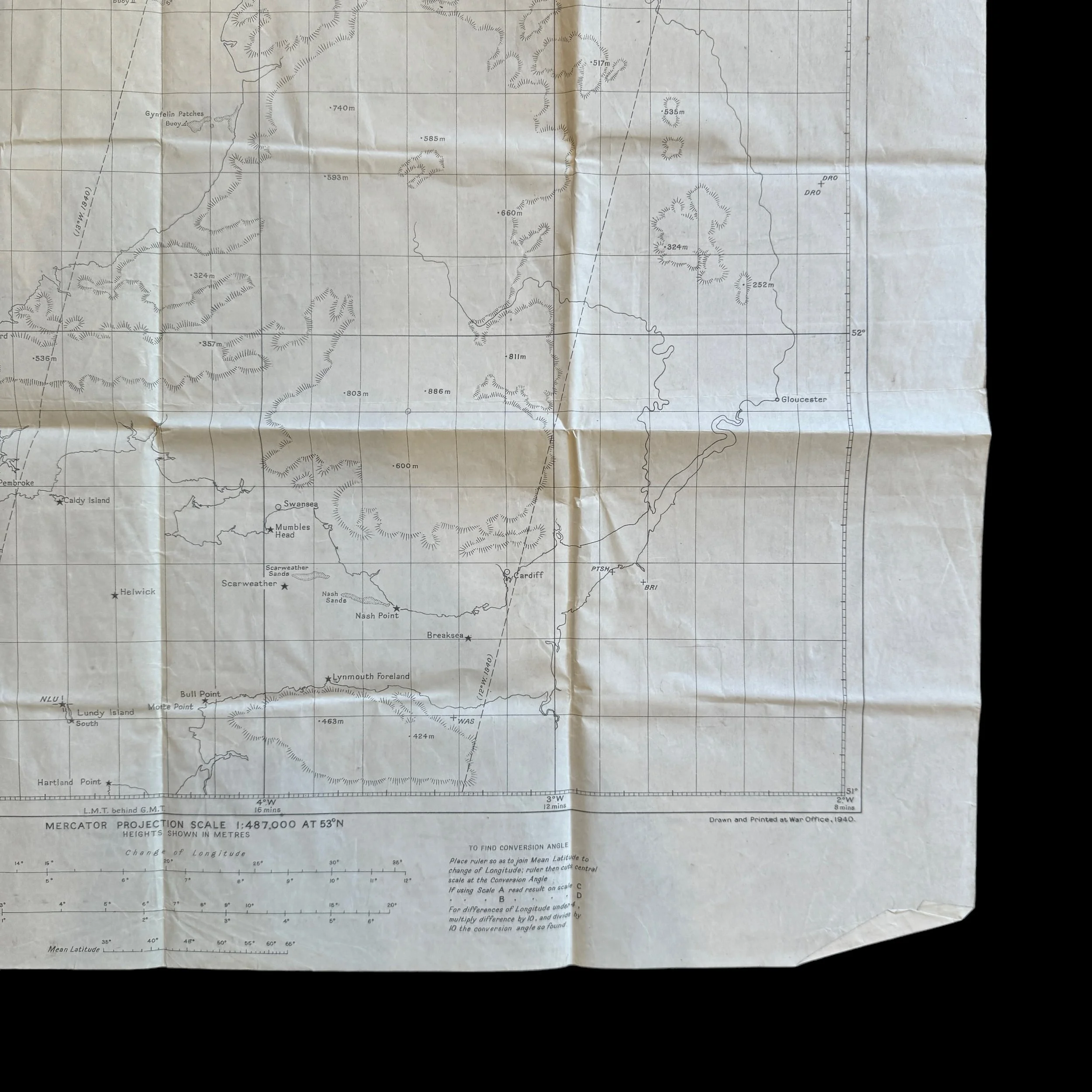



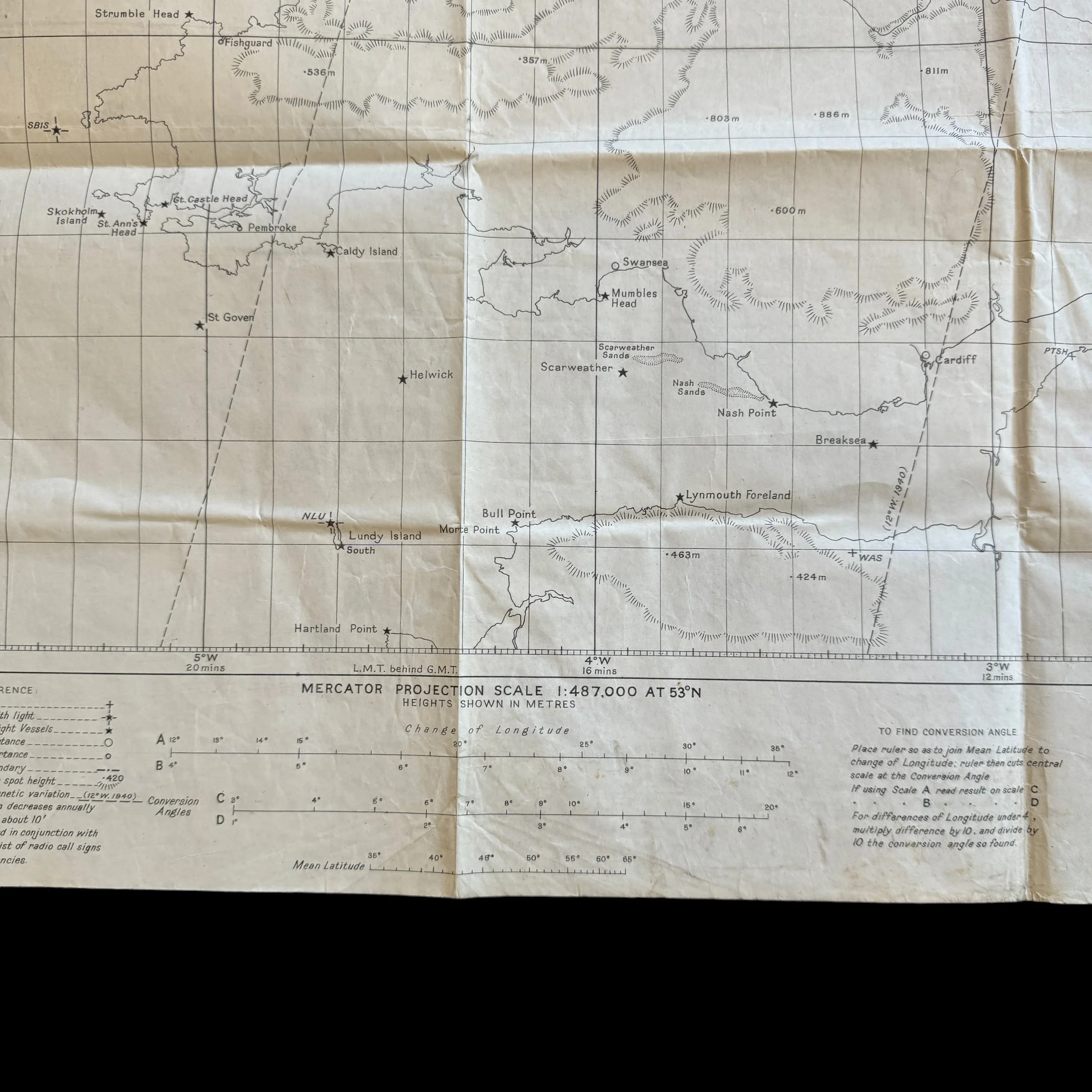
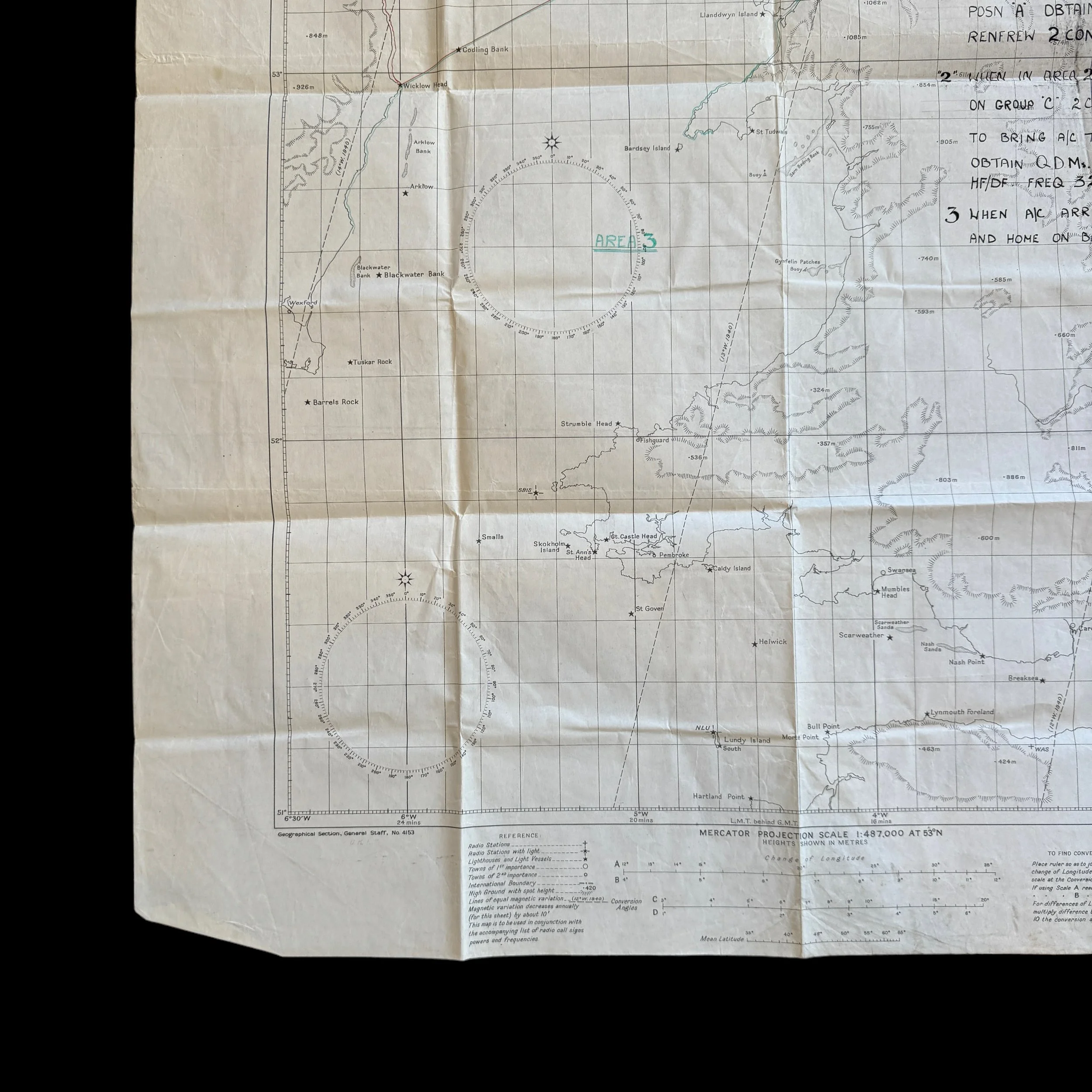


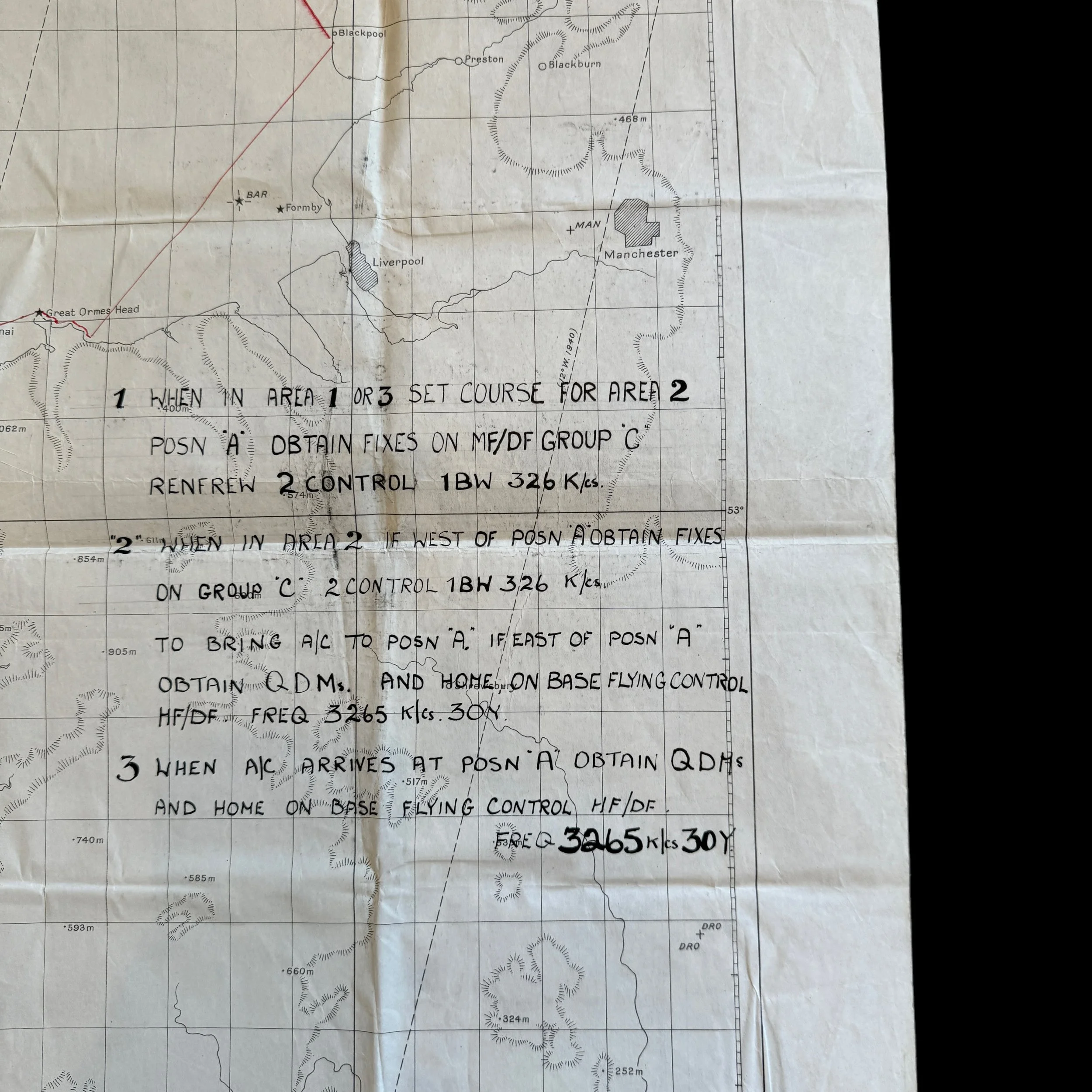




RARE! WWII Royal Air Force 1940 Battle of Britain “EMERGENCY FLIGHT PLAN” Heavily Marked Combat Map
Comes with a hand-signed C.O.A.
This rare and museum-grade WWII Royal Air Force 1940 Battle of Britain “EMERGENCY FLIGHT PLAN” combat map is heavily mission marked and was heavily used during R.A.F air defense, anti-submarine operations, and training during the early phases of WWII in the European Theater. This rare double-sided map is hand-marked by R.A.F. pilots denoting AREAS 1-3 for emergency landing tactics when operating in the region of this map. The backside of the map features many flight paths and navigational lines during Royal Air Force missions.
Royal Air Force Missions in and around the Irish Sea During World War II (1940-1944)
During World War II, the Royal Air Force (RAF) played a crucial role in defending the United Kingdom from the Axis powers. This research explores RAF missions in and around the Irish Sea from 1940 to 1944, highlighting the strategic importance of airfields and bases in the western part of England. The RAF’s activities in this area were pivotal in various military dimensions including air defense, anti-submarine operations, and training, reflecting broader strategic priorities of the Allied forces.
Geopolitical and Strategic Context
The Irish Sea lies between Great Britain and Ireland, serving as a critical maritime and aerial zone during WWII. Its strategic importance was underscored by its role as a gateway to the industrial heartlands of North West England and the Scottish lowlands. For the RAF, control and surveillance of this area were essential to protect shipping lanes, deter Axis aircraft and submarines, and safeguard the west coast against potential invasions.
RAF Airfields and Bases in Western England
Western England hosted numerous RAF airfields and bases that were integral to operations over the Irish Sea. Notable among these were RAF Valley on Anglesey, RAF Woodvale near Southport, and RAF Squires Gate in Blackpool. These bases were ideally positioned to launch aircraft for patrols over the Irish Sea and to engage enemy bombers and fighters heading towards Liverpool and Manchester.
RAF Valley: Established in 1941 on the island of Anglesey, RAF Valley primarily served as a fighter and training base. It was a critical part of the RAF's defensive strategy in the Irish Sea, serving as home to various squadrons over the years, including those flying the Hawker Hurricane and the Supermarine Spitfire.
RAF Woodvale: Opened in late 1941, RAF Woodvale was a few miles south of Southport. It played a dual role in both training and operational missions. Aircraft based here, including Spitfires and later, American Mustangs, patrolled the Irish Sea and were crucial in intercepting Luftwaffe aircraft attempting to mine the sea lanes or attack coastal targets.
RAF Squires Gate: This airfield was of significant operational and logistical importance, supporting anti-submarine and convoy protection patrols, as well as serving as a base for air-sea rescue missions.
Missions and Operations
The RAF missions in the Irish Sea region were diverse, including defensive patrols, anti-submarine warfare, convoy escort, and attack operations against enemy ships and submarines. The intensity of these operations varied with the phases of the war and the shifting priorities of the RAF.
Air Defense: Throughout the war, RAF fighters conducted routine patrols to defend against German bombers. These missions were particularly intense during the Blitz (1940-1941) when German air raids targeted industrial cities like Liverpool. The RAF's successful interceptions helped mitigate the damage and disrupt German bombing campaigns.
Anti-Submarine Warfare: With the Battle of the Atlantic reaching its peak from 1940 to 1943, RAF Coastal Command played a vital role in anti-submarine operations in the Irish Sea. Aircraft like the Sunderland and Catalina flying boats were deployed from bases such as RAF Squires Gate to escort convoys and hunt for U-boats. These efforts were crucial in maintaining vital supply lines to Britain.
Training and Development: The airfields also served as key sites for pilot training and operational testing. RAF Valley, for instance, became synonymous with advanced flying training, preparing crews for front-line service. The challenging weather conditions and varied terrain provided ideal conditions for training pilots in navigation and operational tactics.
The RAF's activities in and around the Irish Sea from 1940 to 1944 were a crucial element of Britain's broader war effort. The airfields in western England were not only pivotal in projecting air power over this strategically important body of water but also served as essential training grounds for the airmen who would go on to play key roles in the later stages of the war. The multifaceted operations conducted from these bases underscored the RAF's adaptability and its critical role in securing Allied victory. The legacy of these efforts is reflected in the enduring importance of these air bases, some of which remain in use by the RAF or have adapted to new roles in the post-war era, continuing to contribute to the security and defense infrastructure of the United Kingdom.